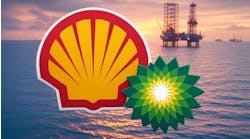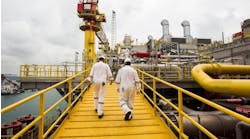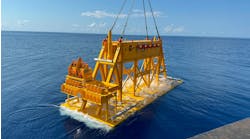Volvo is keen to enhance its presence in the offshore power generation market and is looking to an innovative relationship with a series of other companies in order to achieve its goal. The company recognizes the difficulties of forcing an entry into what is a very competitive market for offshore gas turbines.
In an effort to make an impression it has been exploring the concept of supplying integrated power packages for offshore platform use. Tord Johnsson, the company's business development manager, explains: "Currently offshore operators come out to bid for main power systems, emergency backup power and firefighting water systems separately. In most cases, the main power is supplied by gas turbines and the other systems employ diesel engines."
No over-sizing
"The supplier of each of these systems is forced to oversize them in order to provide an adequate safety margin and to ensure sufficient power for all eventualities," Johnsson adds. "The operator obviously finishes up with more total power than is necessary under almost all circumstances. However, more significantly, he also has an overall power system that is far from optimum in many ways. We believe that by considering the three systems as a single entity we could reduce costs (notably by oversizing the cheaper diesel engines), the overall size of the plant, its weight and fuel consumption and also solve some of the interface issues that surround this area."
Volvo has had discussions with two other interested parties with main offices, like itself, in Trollhattan, Sweden. Stalab makes enclosures for power packages and has an extensive record of offshore work. Wartsila NSD, the experienced diesel engine supplier, is also based locally. The three companies have attracted the interest of one of the major offshore engineering contractors currently positioning itself for a number of prospects in the Norwegian sector of the North Sea. The company has carried out power management computer modeling work on behalf of the team and has been able to define a more efficient, integrated system that will fulfil all the requirements of the operator of at least one of the prospects being considered.
Life-cycle support
Volvo is hesitant to give more details at this stage, except to say that it would be putting forward its VT 4400 gas turbines for the application. This 4.4 MW engine was originally designed by Dresser Rand before being taken over by Volvo. The company is currently working on a low emissions modification for the engine. Volvo would offer to provide life cycle support for the integrated power systems. It already has a well established business providing planned maintenance packages to gas turbine operators both offshore and onshore.
For more information contact Tord Johnsson, Volvo Aero Corporation. Tel: +46 520 94806, Fax: +46 520 93802, E-mail: [email protected]


